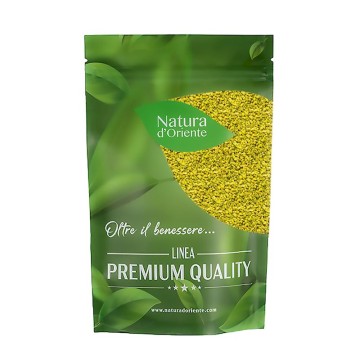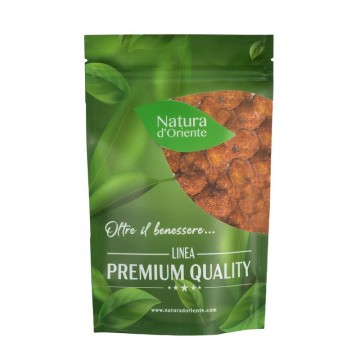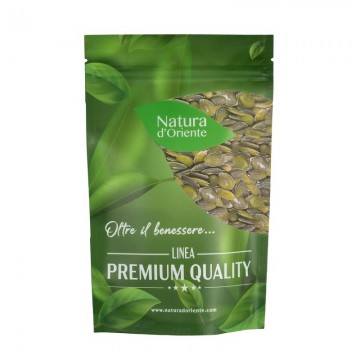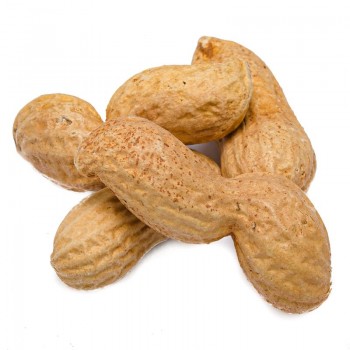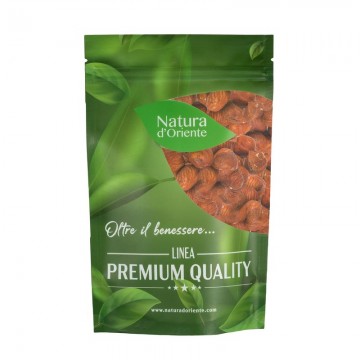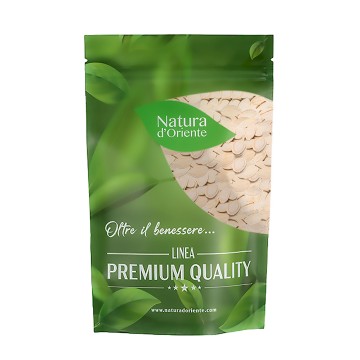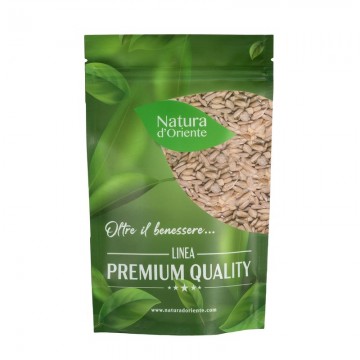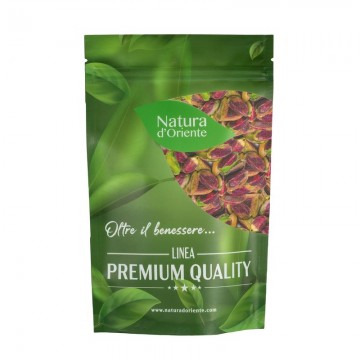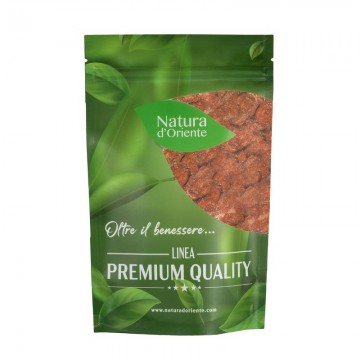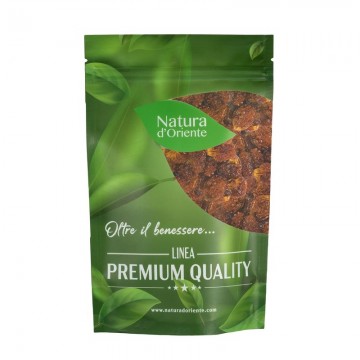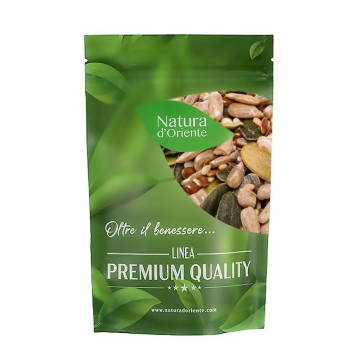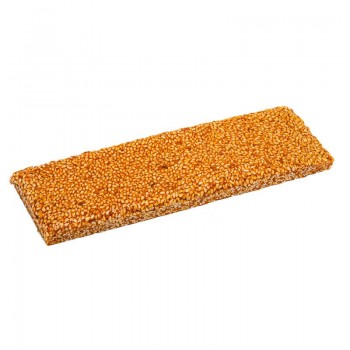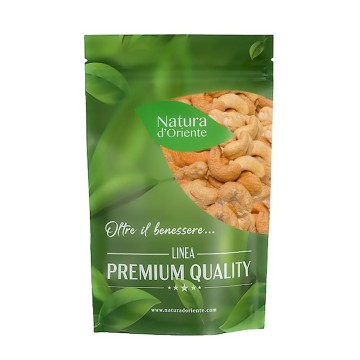The almond tree is a tree native to Iran and neighboring countries. It belongs to the same botanical subgenus as peaches, but the edible part is the seed and not the fruit which is leathery and not fleshy and juicy.
Peeled sweet almonds: properties and benefits
The nutritional characteristics of almonds are similar to those of other nuts, many calories (but a little less than walnuts), good content of vitamins especially of the group B and vitamin E , which is also an important fat content, but only 10% of these is made up of saturated fats (the most dangerous for health if consumed in large quantities).
Peeled sweet almonds: nutritional values
One hundred grams of almonds provide 579 kilocalories, many, more than a pound of chocolate, yet less than other types of dried fruit that can even reach 700 kilocalories and more.
As for the vitamins, as we said, those of group B stand out, in particular we find thiamine (B1) 0.211 mg (equal to 18% of the recommended daily ration), riboflavin ( B2) 1.014 mg (85%), Niacin (B3) 3.385 mg (23%). But it is above all the vitamin E content that is really important (considering that the daily requirement is 8-10 mg) 25.6 mg
As regards fatty acids, 90% is composed of polyunsaturated and monounsaturated, that is, those less worrying for health and indeed, some of which, would help to contain bad cholesterol levels.
Peeled almonds in the diet
One of the benefits of dried fruit is the sense of satiety , for this reason, despite being a very caloric food, 30 grams of almonds are included in the diets compared to a reasonable intake of calories (less than 180) they offer a sense of satiety which obviously helps in diets. As far as vitamins are concerned, it can be noted that the recommended ration of dried fruit of 30 grams alone covers a large part of the daily requirement.
History and cultivation
The almond tree is native to Iran and neighboring countries.
In the countries of the shores of the Mediterranean and northern Africa it was spread by man already in ancient times, it was the Greeks who introduced them to the Mediterranean basin. In more recent times they have spread to other parts of the world, such as California, thanks to which the USA is now by far the largest producer.
Among the wild species, most are bitter, it was man who selected the sweet domesticated variety. Cultivation seems to have started in Armenia and western Azerbaijan, they would have appeared in the early Bronze Age. Cultivation in Spain is documented in an Arabic script from the 12th century.
As for annual production, the US alone accounts for 59%, followed by Spain, Iran, Morocco, Turkey and Italy (Spanish production is just over a sixth of the US one, the Italian one less than one twentieth).
The almond tree belongs to the rosaceae family, genus prunus, subgenus prunus, to which peaches also belong. But we do not eat the fruit which, unlike other fruits belonging to the genus, is not fleshy but thick and leathery, we consume the inner part of the seed, protected by a very hard and reticulated shell (as is that of the peach for the rest. ). The tree is deciduous (it loses its leaves seasonally) and grows from four to 10 meters with a trunk that reaches 30 cm in diameter. Pollination is entomophilic, the almond tree needs a pollinating agent, in fact, to make it more efficient during the flowering period, hives are placed in the crops.
Almonds in the kitchen
Almonds are eaten alone both roasted and raw, but they are also the basis of many dishes. In this case we don't want to be original, how can we not include the recipe for one of the most famous dishes of Chinese cuisine, chicken with almonds?
CHICKEN WITH ALMONDS
- Ingredients for 4 people
- Chicken breast 200 gr
- Egg whites ½
- Peanut (or sunflower) oil 5 gr
- Water 20 gr
- Potato starch 5 gr
- Salt to taste
- White (or black) pepper to taste
- Peeled almonds 20 gr
- Peanut (or sunflower) oil to taste
- For cooking:
- Canned bamboo shoots 80 gr
- Peanut (or sunflower) oil 15 gr
- Water 95 gr
- 2 tsp light soy sauce
- Dark soy sauce 1 tsp
- Potato starch to taste
- Salt to taste
Preparation
1) Cut the bamboo shoots into fairly small cubes
2) Also cut the chicken breast into cubes (same size as the bamboo ones)
3) Put the chicken in a colander and rinse it with a little water (to soften it)
4) Transfer the chicken to a bowl and add half an egg white, salt, white pepper and seed oil
5) Add the water and potato starch and mix well 8
6) Leave to rest for about ten minutes to allow the chicken to absorb the flavor of the marinade
7) Heat abundant alio of seeds in a wok to a temperature of 180 °
8) Throw the almonds in the oil, frying them for a minute, stirring often
9) Drain the almonds and transfer them to a bowl
10) Bring a pot of water to a boil and blanch the chicken for 2 minutes, then drain and put it aside
11) Change the water and repeat the operation with the bamboo, cooking it for five minutes over medium heat and then drain and set aside.
Assembling the ingredients:
1) Heat the wok add the seed oil and the chicken
2) Combine the bamboo and stir for a minute over high heat
3) Pour the water, always continuing to stir
4) Add the salt
5) Add the dark and light soy sauce
6) Continue mixing until the color becomes homogeneous
7) Add the almonds too
8) Mix everything and put out the fire.
9) Dissolve the starch in a separate bowl in a small amount of water.
10) Put the wok back on medium heat and add the mixture with the starch (in this way you will get a very creamy consistency)
11) Stir to mix everything well and serve.
If you want to be purist it should be served with basmati rice.
Recipe source: https://ricette.giallozafferano.it/Pollo-alle-mandorle.html

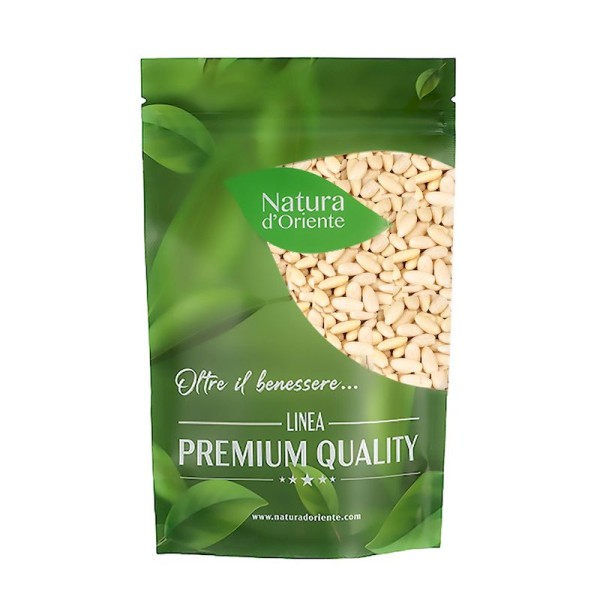









 No reward points for this product.
No reward points for this product.

